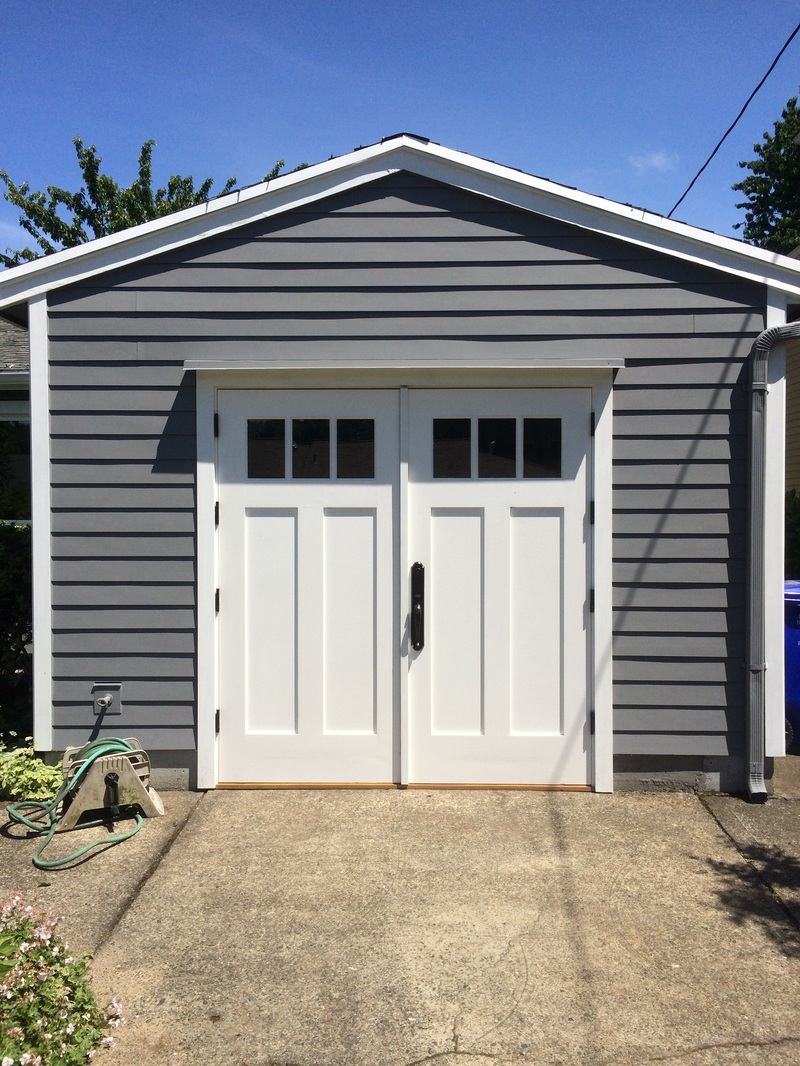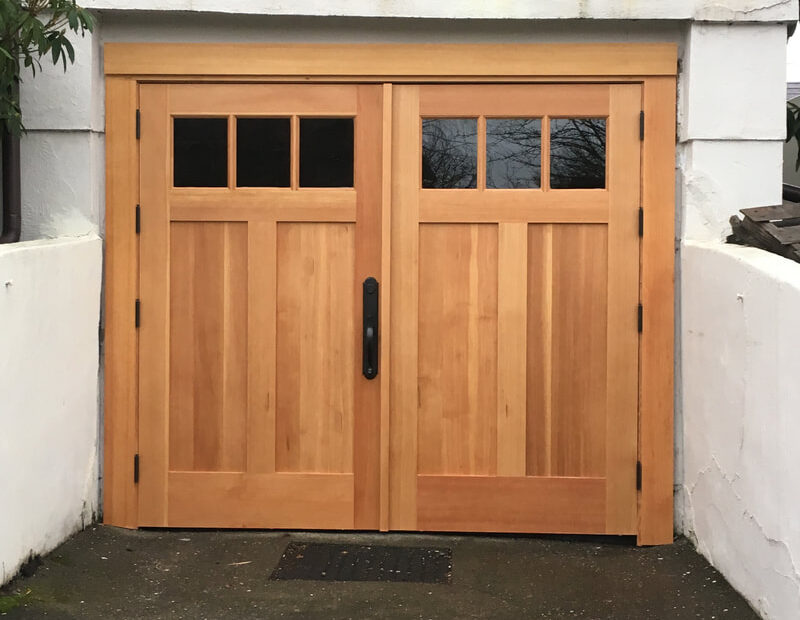Garage doors are now a standard feature in nearly 80% of homes, but their origins, particularly those of carriage-style doors, reflect a rich history of innovation and design evolution. Exploring how these doors have transformed over time provides new insights into their aesthetic and practical functions.
Let’s take a step back in time and trace the development of carriage doors, from their roots in medieval architecture to the sleek, modern versions that enhance homes today.
Where Did Carriage Doors Get Their Name?
Carriage doors originated in medieval Europe, primarily on grand estates and castles, where they were used to store horse-drawn carriages and the horses themselves. The name “carriage doors” stems from this early use, as they were essential for providing large entryways into carriage houses, which were separate outbuildings designed to protect carriages and related equipment.
These early carriage doors were made from sturdy wood with iron hinges and swung open outward. Their design was functional and decorative, featuring details like criss-cross planking, oversized handles, and, occasionally, windows to allow light into the carriage house.
The Shift in Carriage Doors with the Rise of Automobiles
The invention of the automobile in the late 1800s brought about a major shift in how people stored their vehicles. Initially, cars were parked alongside carriages in the same carriage houses, but this arrangement wasn’t practical due to the mess and odors from the animals.
In 1921, C.G. Johnson revolutionized vehicle storage by introducing the first overhead, roll-up garage door, making it far easier for homeowners to move cars in and out of their garages. This innovation marked the beginning of modern garage doors and eventually led to the widespread use of carriage-style garage doors with modern overhead functionality.
Along with this invention, Johnson and Owen Dautrick founded one of the first companies to manufacture carriage-style garage doors, setting up a factory in Detroit. This moment marked the beginning of blending traditional carriage door designs with modern conveniences, shaping the garage door industry we know today.
The Changing Styles of Garage Doors
As garages moved closer to the home in the 1920s and beyond, the design of garage doors began to reflect broader architectural trends. Here’s a look at how carriage-style doors evolved alongside changes in home design.
The 1920s-1940s: Revival and Modern Architecture
During the early 20th century, revival architecture became popular, bringing elements like terra-cotta, wood beams, and iron gates into home and garage design. Garage doors during this time often featured arched windows and doors, reflecting the era’s aesthetic preferences.
Modern architecture also began to take root during this period, particularly in the Art Deco movement. Garage doors took on geometric shapes, polished surfaces, and bold colors, with wood-stained panels and patterned windows becoming popular.
The 1950s-1960s: Expansion and Electric Openers
In the post-war years, as families grew wealthier, the demand for larger garages grew. By the 1950s, most homes had electric garage door openers, making it easier to access the garage from inside the house. Families also began to own multiple cars, which meant garage doors needed to expand to accommodate the extra vehicles.
The 1970s-1990s: New Materials and Better Insulation
The 1970s brought another major shift in garage door materials, as steel and aluminum began to replace traditional wood. These materials offered greater durability and insulation, making it easier to control temperatures inside attached garages. Fiberglass also emerged as a popular option for homeowners looking for lightweight and insulated doors.

The Carriage Door Today: A Modern Take on a Classic Style
While garage doors have evolved, the classic carriage-style door remains a popular choice. Today’s carriage doors offer a perfect blend of historical charm and modern convenience. Here are some key ways carriage doors have adapted to meet contemporary needs:
Style
The historical design elements of carriage doors, such as arched windows, criss-cross planking, and decorative hardware, continue to influence modern versions. Homeowners can now choose from a range of styles, including wood, composite, or steel, to suit their home’s exterior.
Materials and Customization
While wood remains a timeless choice, today’s carriage doors come in a variety of materials, including vinyl, glass, and composite wood. From decorative hardware to color finishes, every aspect of the door can be tailored to the homeowner’s taste.
Safety and Functionality
One of the most significant advancements in garage doors today is safety. Modern garage doors are equipped with sensors that prevent the door from closing if an object or person is in the way, a far cry from the early days when such safety features were nonexistent. Carriage doors can now also be automated, offering the convenience of overhead operation without sacrificing their traditional aesthetic.
The evolution of carriage doors reflects the broader changes in architecture, transportation, and technology over the centuries. From their medieval origins as doors for horse-drawn carriages to their modern iterations as fully customizable garage doors, carriage doors have remained a timeless and versatile design choice.
Want to bring a piece of history into your home? Portland Carriage Doors offers beautifully crafted, custom-designed carriage doors that combine the charm of the past with the innovations of today. Whether you’re looking to elevate your home’s curb appeal or enhance your garage’s functionality, our team is here to help. Contact us today to schedule a consultation and start designing your perfect carriage-style garage doors!
